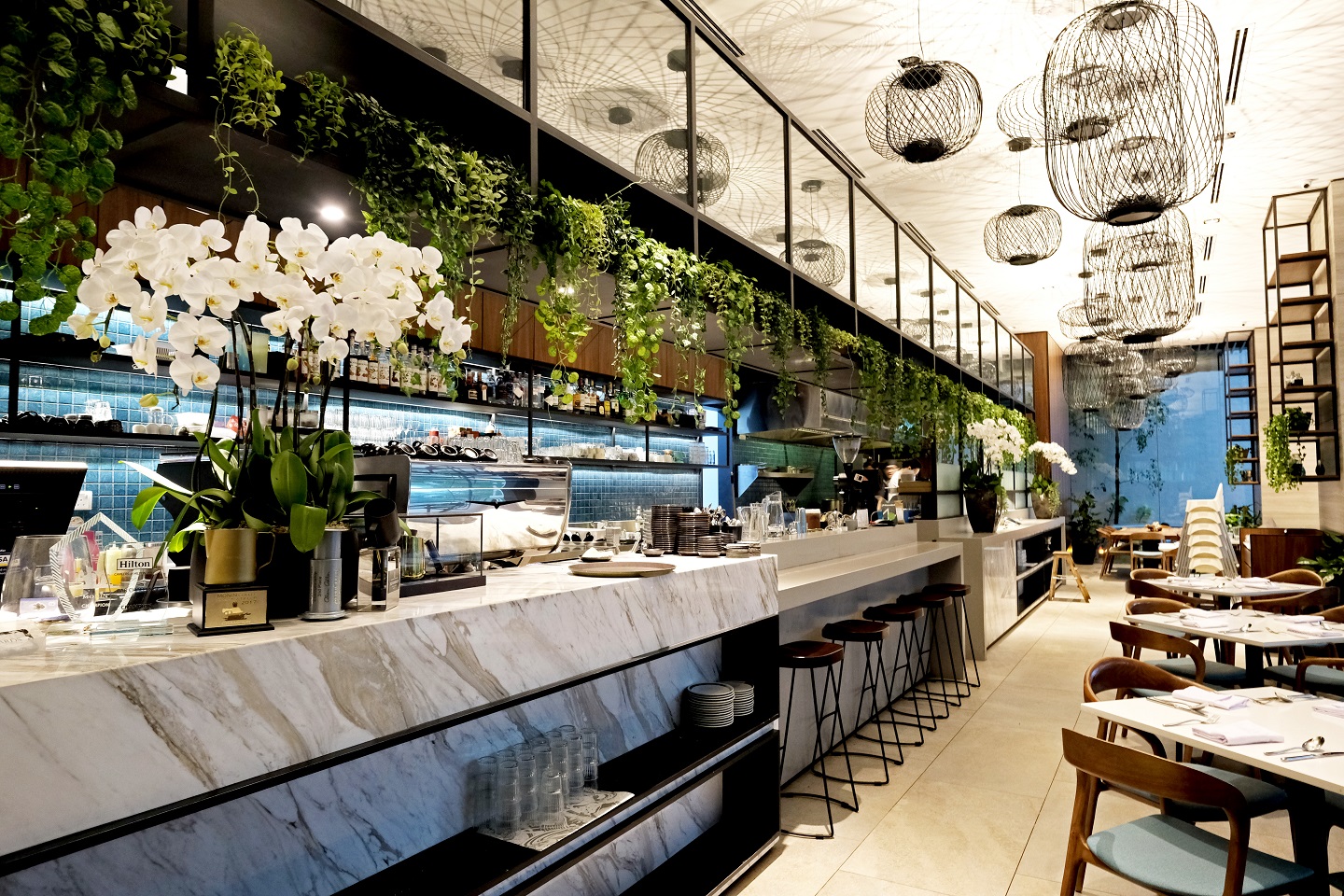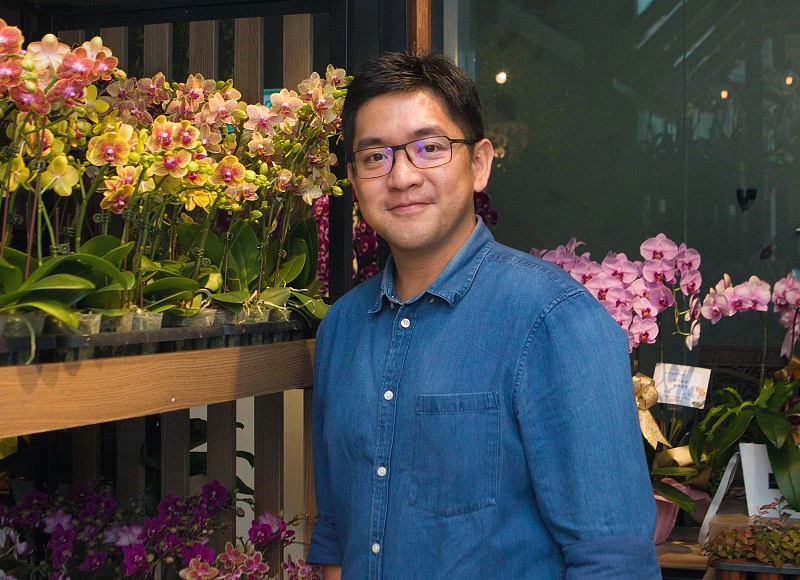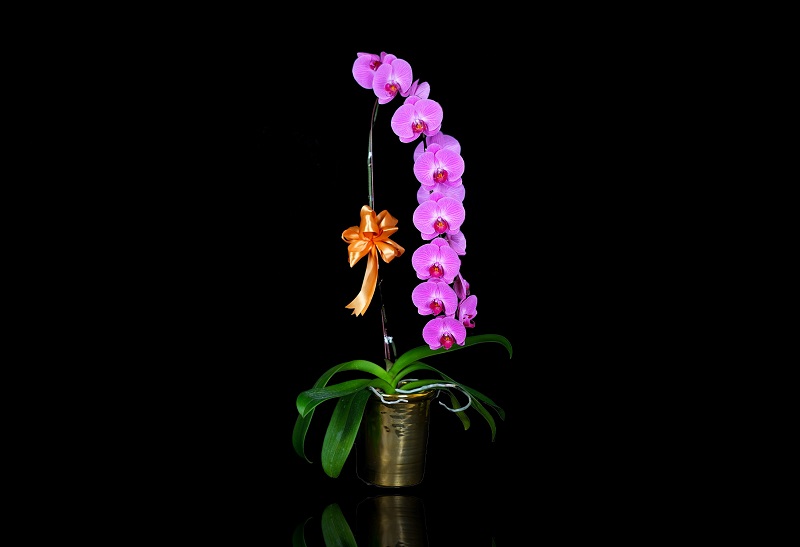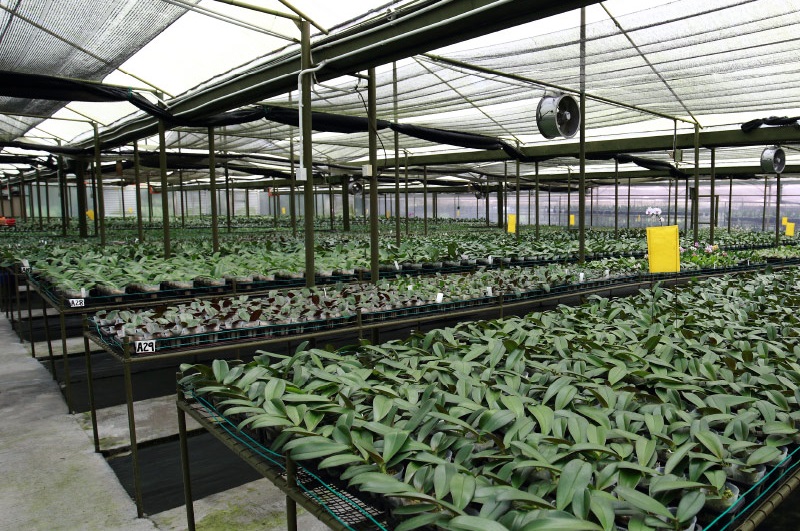
White orchids are easy to match with existing decor and other flowers (Photo: Orchid Culture)
Someone has given you a pot of orchids for a special occasion, not the fresh bouquet you were expecting. So, what do you do now?
The first thing is to check if the plant has enough moisture. To do that, lift it up by the stem: If it feels light, it needs watering. Place the pot under a running tap for 30 seconds until the sphagnum moss is thoroughly wet. Excess water can cause root rot, so drain it off before placing your plant back in the pot.
Next, find the best spot to place your orchids and let them add colour to your home. A standalone space is ideal for their beauty to show. You do not have to worry about watering again until the next week.
There are various misconceptions about orchids, says Darren PS Yeo, director of Waltex Biotec, the parent company of Orchid Culture, a chain of orchid boutiques. Some people think they require a lot of care. Some plant them in soil and find that they die. Others use bricks and, eventually, the exotic blooms wilt and drop off.
20190719_peo_darren_ps_yeo_pg-5.jpg

Orchids are aerated plants, so they cannot grow in soil, Yeo explains. Bricks are an option; however, they absorb heat, which can lead to sunburn. Charcoal works, but it is messy.
Sphagnum moss is the ideal medium for the phalaenopsis, a tropical species also known as “moth orchids”, as it can retain moisture and fertiliser for longer.
Do not water your orchids under the sunlight because the moisture inside the leaves may heat up and harm the plant. If the leaves turn soft and yellow, go easy with the watering can. When the flowers are in bloom, keep them dry at all times.
Like humans, orchids like the sun but not the heat, so placement is important. Putting them under a lamp in your bedroom will not do because they need direct sunlight to thrive, and proper ventilation to prevent fungal infection. They can stay out on the porch, but in the shade, and be watered twice weekly.
When roots start crawling out of the pot, it is time to give your orchids room to grow. Repotting is also necessary if the plant shoots up too high.
1_in_1_luxury_orchid.jpg

As the stem (or spike) grows, multiple blooms can weigh it down. Use metal stakes to give it support and shape the angle you want. Curves lend a natural look to orchid plants, which can thrive for five to eight years with good care.
Phalaenopsis blooms are generally long-lasting — up to three months. After the flowers and yellowed leaves have fallen, trim the stem to about an inch from the base and feed it food — slow-release organic pellets or water-soluble fertilisers. Your plant needs to rest before it reblooms. It could take between six months to a year before new spikes emerge and fresh buds sprout.
It is worth the wait, if you ask Yeo, who finds it therapeutic staring at orchids. He likes the white ones the most, for their simplicity and elegance. They are easy to match with the decor and other flowers, and are Waltex’s bestsellers. The more colourful varieties, such as purple, red and yellow are popular for festive occasions and as gifts. “We started because we were attracted to the colour,” Yeo says.
What began as a backyard hobby for friends Steven S H Cheong and Y K Yap has blossomed into a business that is big and beautiful. They spent six years re-searching, cultivating and propagating phalaenopsis before establishing Waltex Biotec in 2006.
waltexbiotec-farm-visit-10.jpg

The company now owns two farms, named the World of Phalaenopsis, in Ulu Yam, Selangor (open to the public) and Gohtong Jaya, Genting Highlands. Orchid Culture was set up in Bangsar Shopping Centre in 2013, followed by The Gardens Mall and Damansara City Mall, all in Kuala Lumpur.
There are more than 2,000 varieties of orchids at the farms. Over the last year, Waltex came up with about 200 varieties, of which about 70% — determined by the quality and lifespan of their blossoms — made it to the shelves.
Some plants are easy to grow but hard to flower, and vice versa, Yeo says. “For us to confidently say a particular variety is stable takes about a year.” They are also working on producing new colours through cross-breeding and cloning.
Orchids have overtaken roses in terms of sales value all over the world, according to a 2018 market report on floriculture, he adds. Before, they were seasonal gifts packed with hampers. Nowadays, people buy them to decorate their home or office, or present to friends. “We are trying to understand what consumers want.”
The trend of having greenery around the home, especially in urban areas where space is a constraint, has boosted demand. “Place a pot on your coffee table or work desk and it adds light and colour to it.”
Plans are in the pipeline to nurture orchid appreciation and make it a part of healthy living. Orchid Culture works with hotels and offices, providing them with front pieces and smaller arrangements. It set up, and cultivates the Orchid Conservatory for the Majestic Hotel Kuala Lumpur.
“When you give a pot to friends, they will remember because the orchids will still be growing months later. This is a Malaysian product and we do more domestic sales now. We want to ensure we have the best quality and stabilise our production before going overseas,” Yeo says.
This article first appeared in issue No. 93, Autumn 2019 of Haven.


